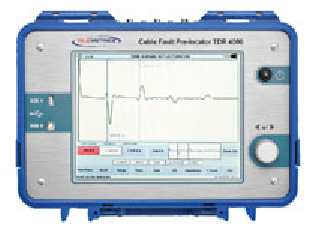Cable Fault Locator


Cable fault location is the process of locating periodic faults, such as insulation faults in cables. In this process, mobile shock discharge generators are among the devices used.
Cable faults are damage to cables which effect a resistance in the cable. If allowed to persist, this can lead to a voltage breakdown. There are different types of cable faults, which must first be classified before they can be located.
| Operating Mode | TDR, ARC, ICE, Decay |
| Distance measurement ranges m@v/2=100m/μs | 60, 120, 250, 500, 1000, 2000,5000, 10000, 20000, 50000, 120000 |
| Resolution − 0.5 @ v/2 − 0.4 @ v/2 |
100 m/μs 80 m/μs |
| Sampling rate | 400MHz |
| Gain | -33 – 104dB |
| Output impedance (10 Ohm steps) | 10 – 500 Ohm |
| Propagation velocity (v/2) | 50.0 – 150.0m/μs |
| Averaging reflectograms number | 64 max |
| Time domain accuracy,% of FS | 0.2 |
| Pulse amplitude | 45V |
| Pulse width 10ns | – 100 000ns |
| Propagation velocity (V/2)resolution | 0.1 m/us |
| Control | Touchscreen and control knob |
| Connectivity | RS-485, USB |
| Internal data storage | 4 Gb (not less than 1000 reflectograms with data) |
| Display | 10.4”, 800×600 TFT, touch-sensitive |
| Internal battery | 12 V (8 hours of operating when fully charged) |
| External power adaptor | Input 230V 50 Hz Output 24 V DC |
| Power consumption | 36 W max |
| Operating Temperature | -20 ~ +55deg C |
| Dimensions, | 366 × 271 × 178mm |
| Net weight (with internal battery) | 8.0 kg |
Copyright © 2025 OUTDID UNIFIED PVT LTD | Powered by OUTDID UNIFIED PVT LTD